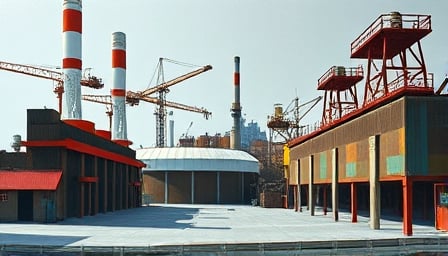Intel Corp Faces Challenges Amid Layoffs and Market Uncertainty
In a turbulent week for Intel Corp, the semiconductor giant is grappling with significant operational and financial challenges. As of April 25, 2025, the company’s stock has been under pressure, reflecting broader concerns about its future direction and market position.
Layoffs and Operational Streamlining
Intel has confirmed a series of layoffs as part of a broader strategy to enhance productivity among its engineering teams. The company’s CEO announced a comprehensive plan to streamline operations, which includes cutting various departments, discontinuing non-core products, and implementing stricter in-office mandates. These measures are part of a broader effort to reduce costs and refocus the company’s strategic priorities.
Financial Performance and Market Reaction
Despite beating first-quarter earnings and revenue estimates, Intel’s outlook for the ongoing quarter remains weak. The company reported flat revenue for Q1 2025 and has reduced its capital expenditure, signaling further job cuts in Q2. This cautious outlook has led to a significant drop in Intel’s stock price, with shares falling by 10% as tariff impacts overshadow strong earnings results.
Strategic Partnerships and Market Dynamics
In an attempt to bolster its competitive position, Intel is reportedly considering a partnership with Taiwan Semiconductor. This move could enhance Intel’s chip production capabilities amid growing trade tensions between Washington and Beijing. Interestingly, these tensions have also led to a surge in sales of Intel’s older chips, as customers seek more affordable options.
Market and Analyst Perspectives
Analysts remain divided on Intel’s prospects. While some see potential in strategic partnerships and cost-cutting measures, others are concerned about the company’s ability to navigate a rapidly evolving semiconductor landscape. The market’s reaction to Intel’s recent announcements has been mixed, with some investors wary of the company’s long-term viability.
Conclusion
As Intel navigates these challenges, the company’s ability to adapt and innovate will be crucial. With a market capitalization of over $82 billion, Intel remains a significant player in the semiconductor industry. However, the path forward will require careful management of both internal restructuring and external market dynamics. Investors and stakeholders will be closely watching as Intel seeks to redefine its role in the technology sector.
